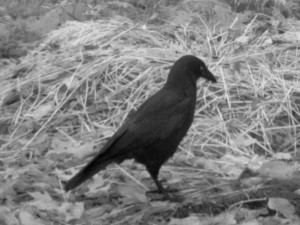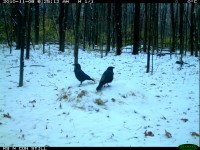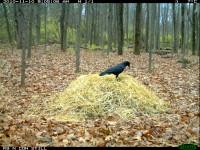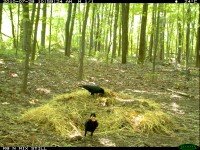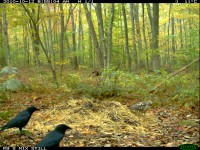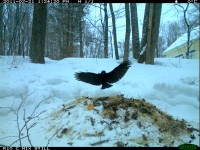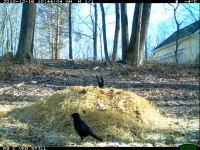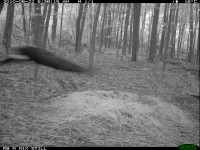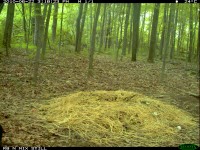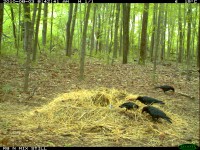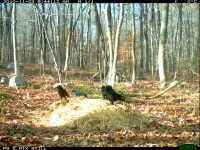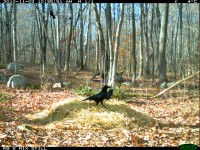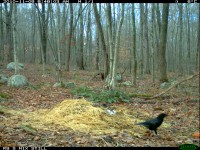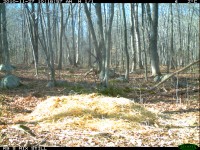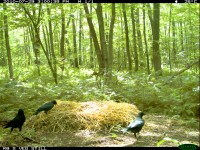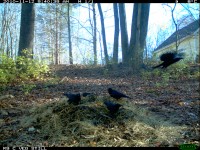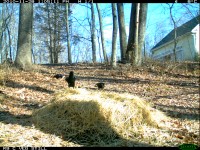Order: Passeriformes, Family: Corvidae
Appearance/Behavior: The American crow (43 – 53 cm) has entirely black plumage, black legs, and black bill. In flight, the trailing edge of the tail is straight, resulting in a fan-shape. Crows are very social birds, appearing at the compost piles in groups ranging from one to nine. Crows will sometime burrow into the pile as they forage. In the mid-summer, interactions between begging offspring and adults have been documented. Visits of red-shouldered hawks often coincide with crow encounters. Furthermore, gray squirrel activity around the compost piles often takes place while crows are foraging on the pile itself.
Relative Frequency of Visitation in Study: Extremely abundant.
Seasonal Activity: Year-round.
Daily Activity: Strictly diurnal.
Similar Species: In the compost study, only one other species attending the piles has the American crow’s dominant black coloration. That is the adult common grackle, a much smaller bird, with a proportionately thinner beak. Within the region of the study site, there are two congeners of the American crow that could be potentially confused with it: the common raven (Corvus corax) and the fish crow (C. ossifragus). The raven is a larger bird (61 cm), with a thicker bill than the American crow. In flight, the trailing edge of the raven’s tail is convex, providing a wedge-shaped appearance. The fish crow is smaller (39 cm) and has a proportionately longer tail than the American crow. Although ravens have been heard flying in the distance at the study site, none have actually been seen on the ground. Fish crows don’t venture far from the Connecticut River valley (about 20 km to the west) and the shore of Long Island Sound (about 45 km to the south).
Well-defined Images:
Challenging Images:
Help with challenging images: Rows 1-2, Rows 3-4, Rows 5-6, Rows 7-8
Near Video:


